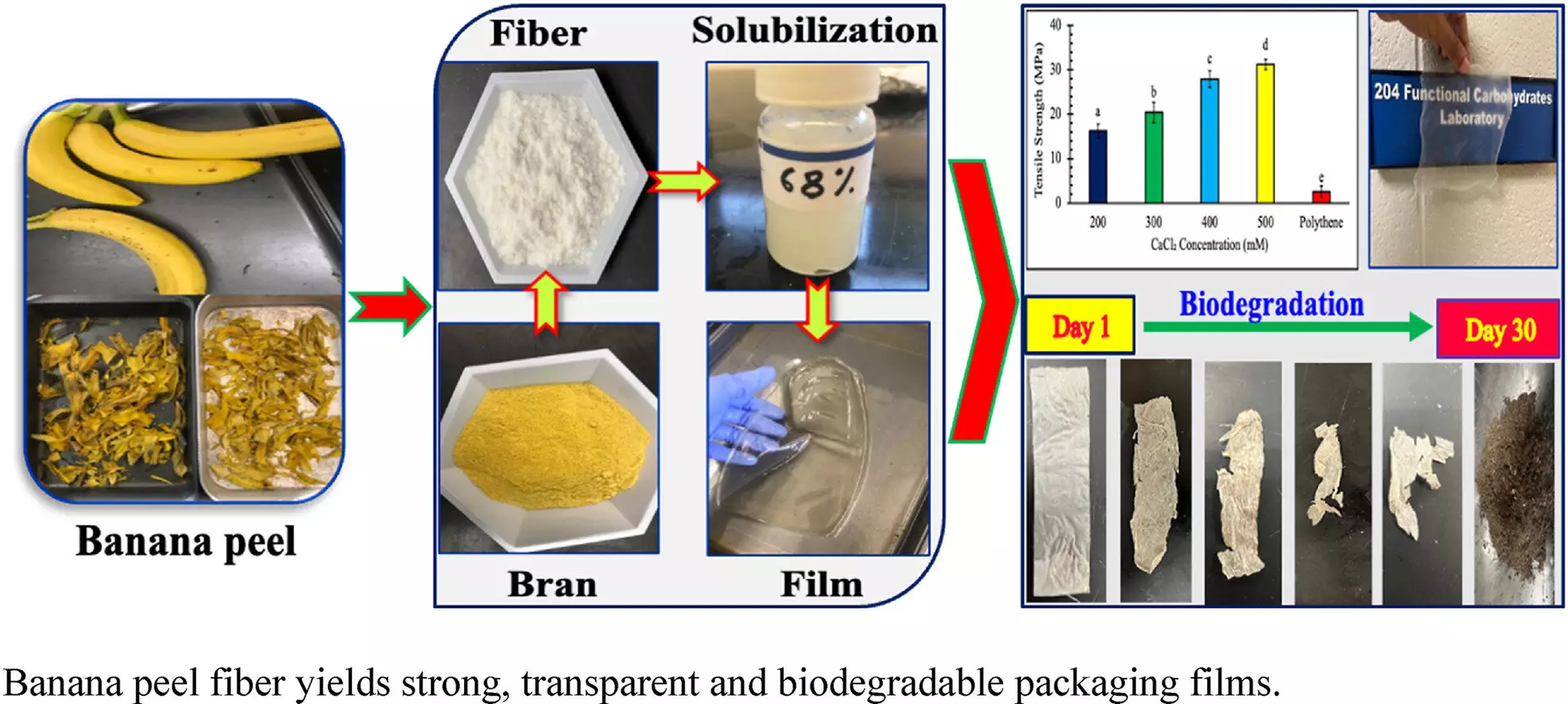Bananas are a widely consumed and beloved fruit around the world, but what if their peels could be the key to combating the ongoing plastic waste crisis? Srinivas Janaswamy, an associate professor of food chemistry at South Dakota State University, conducted a study on “Biodegradable packaging films from banana peel fiber,” which was published in the journal Sustainable Chemistry and Pharmacy. Janaswamy’s research focuses on utilizing agricultural byproducts like banana peels to create biodegradable films that can serve as plastic-like packaging materials that decompose in the environment.
The main issue with petroleum-based plastics, which are the most common type of plastic, is their lack of decomposition. Plastic packaging such as bags can take up to 20 years to break down, leading to significant environmental pollution and health hazards. As a result, finding an alternative material that can biodegrade relatively quickly is crucial in addressing the plastic waste crisis. Janaswamy emphasizes the urgency of remediation measures with a sustainable alternative to traditional plastics, with banana peels emerging as a promising and cost-effective option.
Given the vast quantities of bananas grown worldwide, there is a significant amount of banana residue generated. Banana peels, which are primarily composed of lignocellulosic material, offer an ideal basis for creating biodegradable films. The lignocellulosic residue from banana peels is robust, biodegradable, lightweight, and non-toxic, making it a valuable resource for producing bioplastics. With approximately 36 million tons of banana peels discarded annually, repurposing this byproduct for biodegradable packaging not only benefits the agricultural industry financially but also helps prevent environmental pollution.
Banana production has been steadily increasing, and the demand for plastic packaging material is expected to rise alongside the growth in packaged and processed foods. In their study, Janaswamy and his team demonstrated how banana peels can be transformed into biodegradable films that have the potential to replace conventional petroleum-based plastics. By converting banana peels into fibers, extracting lignocellulosic material, and processing them into films, the researchers were able to create strong, transparent films that biodegrade within 30 days. These innovative films offer an environmentally friendly alternative to traditional plastic packaging materials.
Read More: Abatacept Shows Promise in Preventing Rheumatoid Arthritis
Transparency is a key feature of packaging films, as consumers often prefer transparent packaging to assess the freshness of food products. The biodegradable films made from banana peels exhibited higher transparency compared to films from other byproducts. Additionally, the tensile strength and elongation values of the banana peel films surpassed those of commercial grocery sack bags, indicating their potential for various packaging applications. With a tensile strength of over 30 MPa, banana peel fibers can be a suitable material for sack bags and related packaging needs. This breakthrough research highlights the viability of banana peels as a sustainable resource for producing biodegradable films.
The study on biodegradable packaging films from banana peels showcases the innovative potential of utilizing agricultural byproducts to address the plastic waste crisis. With further research to enhance film flexibility, scale up production, and explore commercialization opportunities, banana peels could become a valuable resource in the transition towards sustainable packaging materials. By leveraging the abundance of banana residue and harnessing its properties to create biodegradable films, we can take a significant step towards reducing plastic waste and promoting environmental sustainability.


Leave a Reply